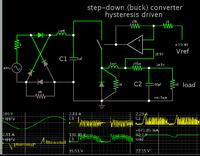biswaIITH
Full Member level 4

The "free lunch" saying is quite often quoted at Edaboard when talking about design trade-offs.
It this case, it means that the tricky topology most likely involves higher EMI than industry standard PFC designs. There's a reason why commercial PFC power supplies use a different topology.
So what is your suggestion now to improve the EMI??as it is too late to change the topology..What measures should i take now to decrease the EMI if not eliminate entirely????




